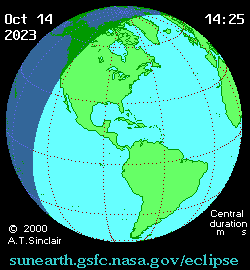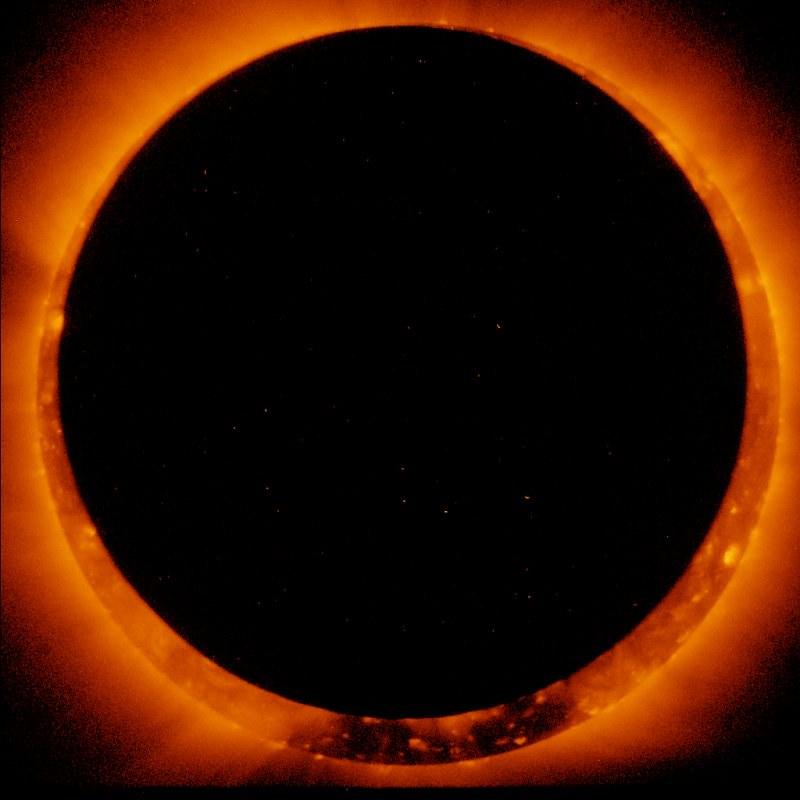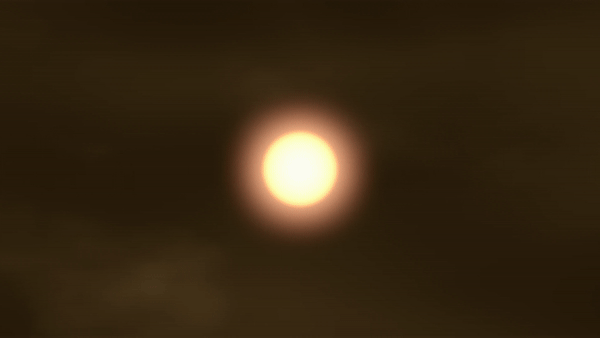On Oct. 14, 2023, an annular total solar eclipse will be visible to millions across the globe as it sweeps through the skies of the northwestern United States through Mexico and Central America and into South America, exiting the continent in Brazil. Even if you are not in the path of annularity, you will still be able to see a partial solar eclipse if weather conditions are right.

A map developed using data from a variety of NASA sources shows a detailed eclipse path and what observers across the States can expect to see at their local time.
The Moon’s distance from Earth is not constant, sometimes it is a little closer, sometimes a little farther away. When the Moon passes between the Sun and Earth while it is close to or at its farthest point from Earth, an annular eclipse happens. Because the Moon is farther away from Earth than on average, it appears smaller than the Sun, creating a “ring of fire” effect in the sky, and since the Sun is never completely covered, observers must wear proper eye protection at all times while watching an annular eclipse.
During a total solar eclipse, like the upcoming 2024 Solar Eclipse, the Moon is close enough to Earth to be sufficiently large to completely cover the bright face of the Sun. During the few minutes of totality, there will be darkness around midday.

What you can see during an annular eclipse depends on the weather and your location.
-
-
- You need a clear sky to see the eclipse. However, even with cloud cover, the eerie daytime darkness associated with eclipses is still noticeable to human animals as well as the four-footed ones and the flying ones. Birds go to roost, bees return to the hive, and even turtles come out of ponds.
- To see all phases of an annular eclipse, including the “ring of fire,” you must view it from somewhere within the path of annularity.
-

If you are not within the path of annularity, watching the eclipse from a virtual location is a great option. Join NASA for conversations with scientists and telescope views from across the country on NASA’s YouTube beginning at 10:30 a.m. CT on Oct. 14, 2023.
By Lauren Perkins
NASA Marshall Space Flight Center
